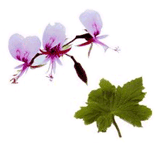
Beargrape
Introduction
This fact sheet provides basic information about beargrape. Beargrape
is described as a small evergreen shrub with clusters of small white or pink bell-shaped flowers and dull orange berries. Although the berries do not seem to possess any medicinal benefits, the leaves have been used traditionally as an herbal remedy for mild, uncomplicated cystitis (inflammation of the bladder). Grown throughout Asia, North America and Europe, beargrape has a long history of medicinal use dating back to the 13th century. The leaves have been used worldwide as a diuretic, astringent, antiseptic and a treatment for urinary tract infections (UTIs). A tea brewed with the leaves has also been used as a laxative.
Common Names
Beargrape
Latin Names
Uva-ursi
What It Is Used For
How It Is Used
Medicinal substance derived from the leaves of the plant.
What the Science Says
- Uva ursi has long been used as a folk remedy to treat urinary tract infection. The active ingredients in the herb are believed to be ursolic acid and isoquercitrin. Additional study is needed to make a strong recommendation..
Side Effects and Cautions
- Nausea and vomiting, irritability, insomnia, and an increased heart rate.
- Women who are pregnant or breastfeeding should not take uva ursi.
- It is also not recommended for those with high blood pressure.
Sources







